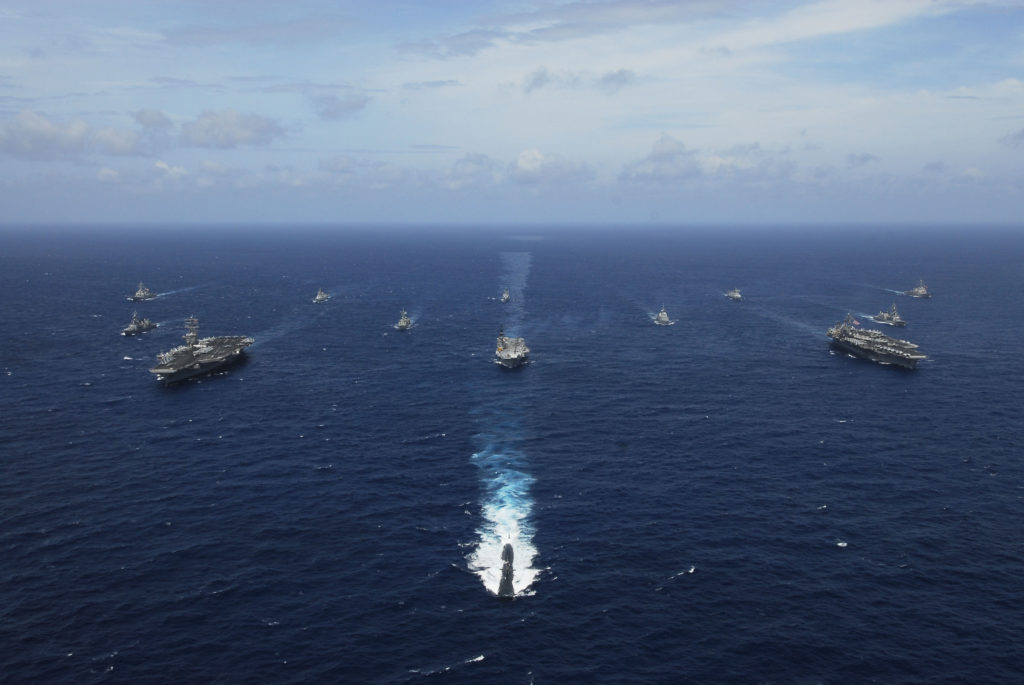It Is Time To Reimagine The Indian Ocean

India must stop seeing the Indian Ocean in silos and the defence establishment must step up its engagement in the wider region
If China indeed is emerging as the key competitor to India’s interests in the Indian Ocean Region, there is a need to reframe our mental maps and view the Indian Ocean as one space, and better understand regional dynamics.
The United States (US) secretary of defence, Lloyd Austin’s recent visit to India underlined the strategic importance of Delhi in Washington’s Indo-Pacific engagements. Although the US and India did not sign any specific agreements during the visit, defence minister Rajnath Singh and Austin provided, with their brief statements, a glimpse into the areas of collaboration that lie ahead.
For the maritime domain, the interesting takeaway was the specific mention in Singh’s remarks to “pursue enhanced cooperation between the Indian military and the US Indo-Pacific Command, Central Command and Africa Command”. On Twitter, Austin mentioned the western Indian Ocean as a region for collaboration (in addition to the Indo-Pacific) after his meeting with external affairs minister, S Jaishankar. Underlining the need to work with the three US combatant commands, and referring to the western Indian Ocean, is an acknowledgement of the bureaucratic division of the ocean and the need to work through its imaginary divisions. It is also a nod toward the importance of the African coast within the Indian Ocean framework, a geographic reality often lost amid South Asia and West Asia’s geopolitics.
Washington is not alone in engaging the Indian Ocean in silos; Delhi’s political class, too, has divided the ocean into many sub-regions. Traditionally, India draws a line with Mauritius and Seychelles as its areas of strategic collaboration in the Indian Ocean. In terms of sub-regions, the priority is in the northern (Arabian Sea and Bay of Bengal), and eastern Indian Ocean (Andaman Sea and Straits of Malacca). The Indian Navy, on the other hand, defines the region in its entirety as its area of responsibility from the coast of Malacca to the eastern coast of Africa. While India has begun to rectify this division of the Indian Ocean, especially with the establishment of the Indian Ocean division in the ministry of external affairs (MEA) in 2016, the western Indian Ocean and the eastern coast of Africa still continue to be in the maritime periphery in Delhi’s official worldview.
To place this in context, Beijing’s first overseas military base was set up in the western Indian Ocean, in Djibouti in the Horn of Africa. Russia too recently acquired a base in Sudan, on the Red Sea coast, between the Suez Canal and Bab-el-Mandeb — a strategic chokepoint in the Indian Ocean. Beyond the anti-piracy mission, India’s presence and maritime engagements with the African coast, however, have been largely ad hoc.
Since Independence, India has enjoyed an advantageous position in the Indian Ocean, primarily accorded through its geography. The lack of direct competition after the end of the Cold War allowed India to continue with its limited maritime approach while retaining the role of a key “Indian Ocean player”. In reality, Delhi ignored and misunderstood the geographic importance of its maritime environment.
In comparison, Beijing has consistently aimed to improve its diplomatic, political and military engagements in the region from Sri Lanka to the Comoros, spanning the Indian Ocean in its entirety. Through the Maritime Silk Road, part of China’s Belt and Road initiative, Beijing engages with littorals and islands across the Ocean. Over the years, Beijing has undertaken missions and activities to show both its interest and ability to emerge as a key player in the Indian Ocean — from the 2014 submarine docking in Colombo and assisting Maldives in its 2016 water crisis to establishing its military base in Djibouti in 2017.
Prime Minister Narendra Modi’s visit to Indian Ocean islands (Sri Lanka, Mauritius and Seychelles) in 2015 was the first visit by an Indian leader in over three decades in an attempt to re-engage with the Indian Ocean. While the current government has adopted a more active outlook toward the maritime domain — encouraged by China’s increasing presence — there are challenges in fully understanding and leveraging India’s potential in the Indian Ocean.
India’s reorientation toward the maritime domain has been not been easy, with generations of foreign and defence service officials focusing and training on continental issues. That the Indian Navy is allotted approximately 14% of the defence budget speaks clearly to the defence establishment’s priorities.
While this is not to discount Delhi’s continental troubles, seen in recent crises such as Doklam and Ladakh, there is a need to understand the importance of maritime geography and its link to India’s strategic interests and growing competition in the region.
While MEA appears to be undertaking a more active approach in correcting this negligence, the defence establishment too has to match foreign policy engagements.
The Navy’s priority is maritime domain awareness, which translates into being aware of all movements, under, on and over, the sea. In order to prepare for emerging new threats, being aware is the first step in formulating policies. However, Delhi continues to struggle in working with the Indian Ocean as one region.
For example, Madagascar and the Comoros were excluded from MEA’s Indian Ocean division until December 2019. India continues to exclude the two countries from its Indian Ocean Coastal Surveillance Radar Network — aimed at increasing collaborations and information-sharing with the region.
There is also no defence attaché in either of the countries or accredited from neighbouring islands covering military developments around those waters. With a limited footprint on the African coast, the western Indian Ocean remains a blind spot in Delhi’s Indian Ocean engagements.
If China indeed is emerging as the key competitor to India’s interests in the Indian Ocean Region, there is a need to reframe our mental maps and view the Indian Ocean as one continuous space, and understand regional dynamics better.


